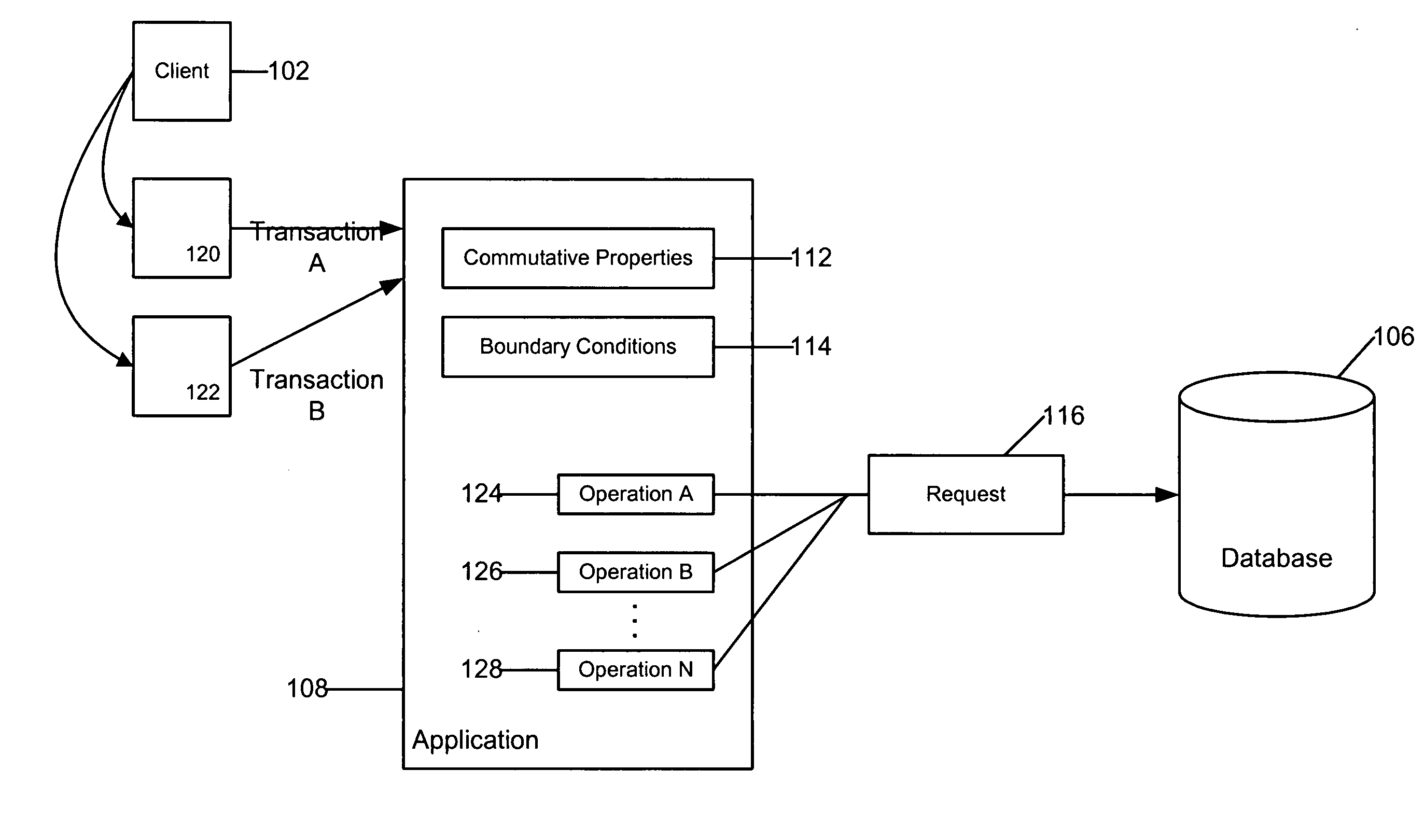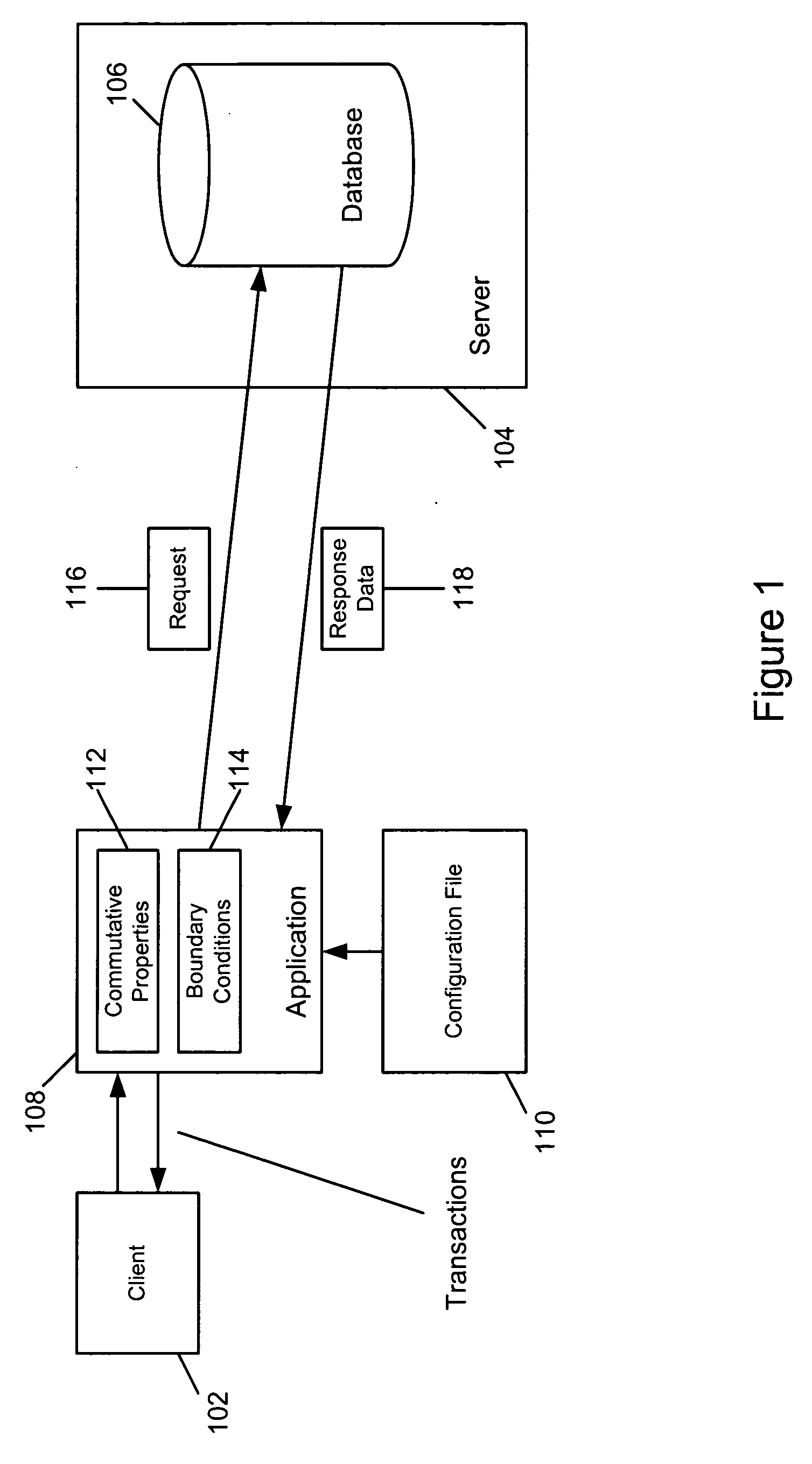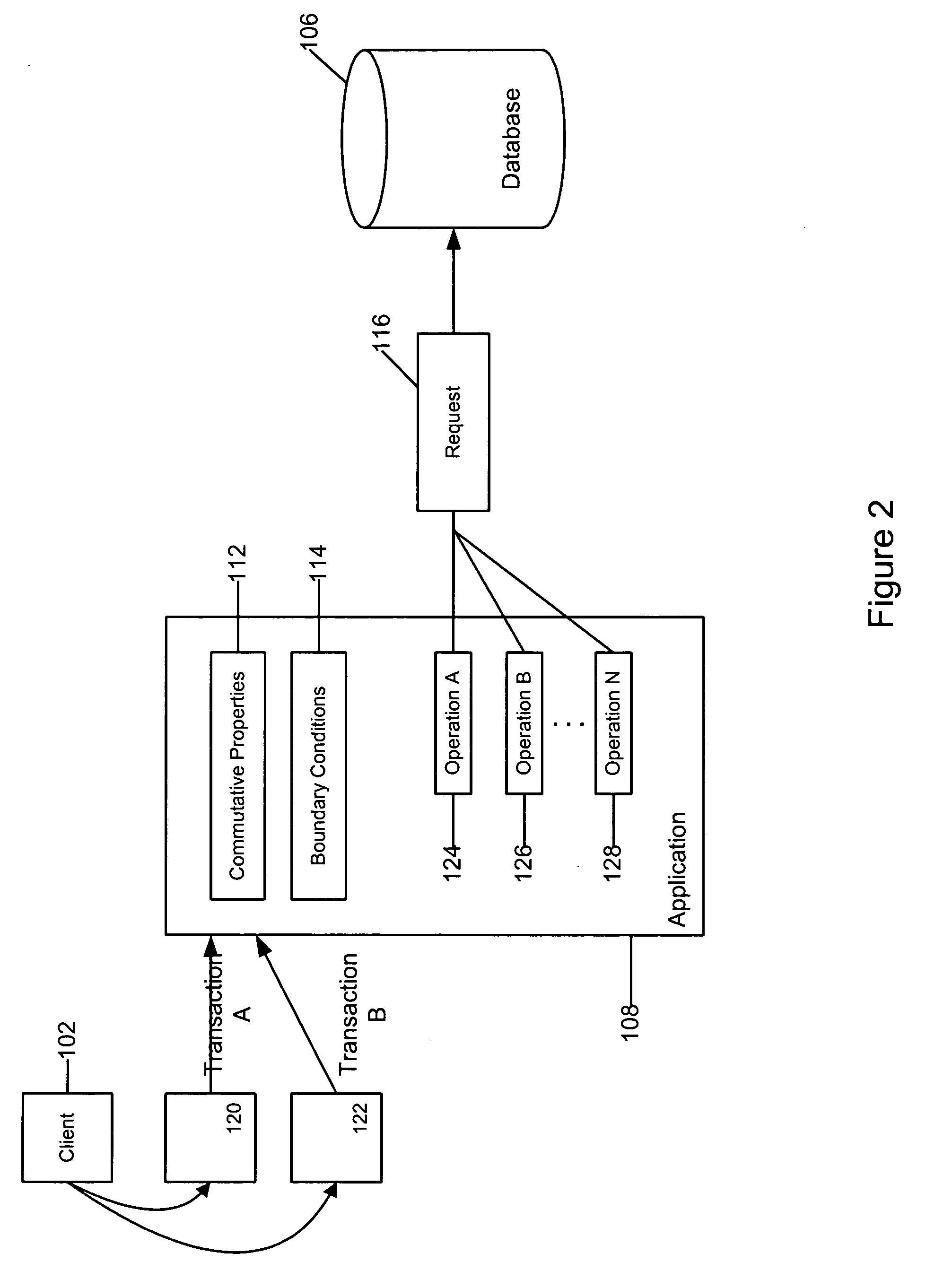System and method for performing commutative operations in data access systems
a data access system and data access technology, applied in the field can solve the problems of data access systems, errors in the transaction itself, delay in processing transactions, etc., and achieve the effects of convenient use and customization, quick and easy modification, and fast and easy modification
- Summary
- Abstract
- Description
- Claims
- Application Information
AI Technical Summary
Benefits of technology
Problems solved by technology
Method used
Image
Examples
Embodiment Construction
[0021] An embodiment of the invention addresses the need for a system by which a software developer or administrator can use their knowledge and / or development of a particular application, to best utilize database features in a way that minimizes hot spots, and optimize the performance of data access and updates to the database. In order to do this, an embodiment of the invention makes use of the developers knowledge of particular transaction and transaction operations that can be performed in a commutative manner. As defined in the context of one embodiment of the invention, an operation is commutative if it can be combined with another commutative operation, such that the final result of performing the two operations at the same time would be equivalent to, or equal to, the final result if the two operations were performed sequentially. The overall effect is to perform the operations in a parallel fashion so that one operation does not block or restrict the processing of a second ...
PUM
 Login to View More
Login to View More Abstract
Description
Claims
Application Information
 Login to View More
Login to View More - R&D
- Intellectual Property
- Life Sciences
- Materials
- Tech Scout
- Unparalleled Data Quality
- Higher Quality Content
- 60% Fewer Hallucinations
Browse by: Latest US Patents, China's latest patents, Technical Efficacy Thesaurus, Application Domain, Technology Topic, Popular Technical Reports.
© 2025 PatSnap. All rights reserved.Legal|Privacy policy|Modern Slavery Act Transparency Statement|Sitemap|About US| Contact US: help@patsnap.com



